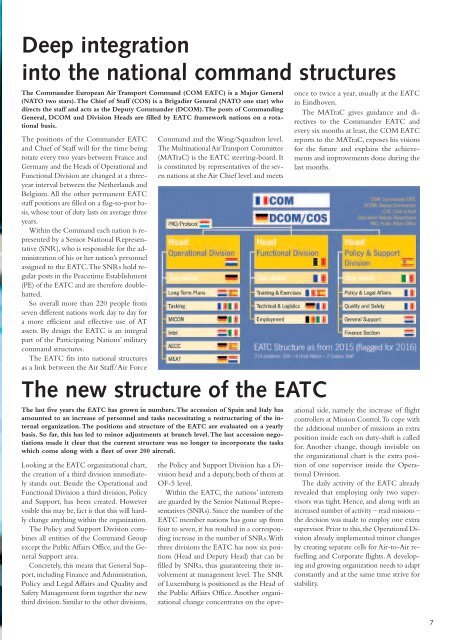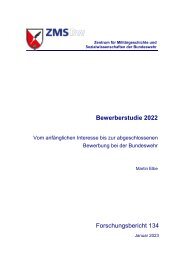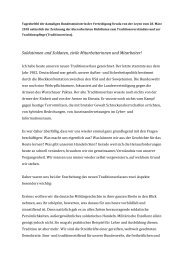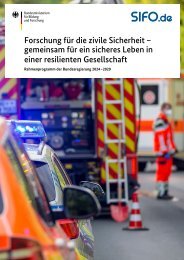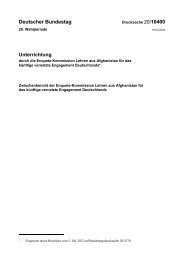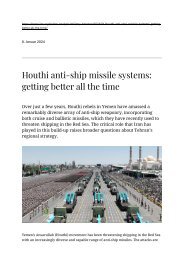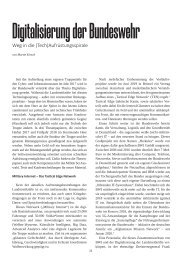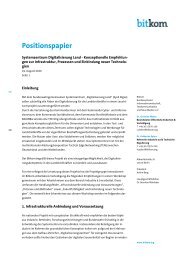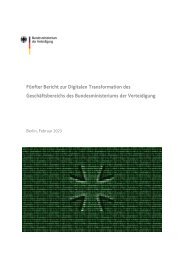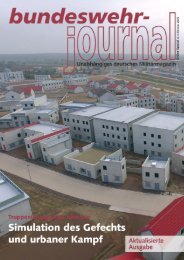EATC
Create successful ePaper yourself
Turn your PDF publications into a flip-book with our unique Google optimized e-Paper software.
Deep integration<br />
into the national command structures<br />
The Commander European Air Transport Command (COM <strong>EATC</strong>) is a Major General<br />
(NATO two stars).The Chief of Staff (COS) is a Brigadier General (NATO one star) who<br />
directs the staff and acts as the Deputy Commander (DCOM).The posts of Commanding<br />
General, DCOM and Division Heads are filled by <strong>EATC</strong> framework nations on a rotational<br />
basis.<br />
The positions of the Commander <strong>EATC</strong><br />
and Chief of Staff will for the time being<br />
rotate every two years between France and<br />
Germany and the Heads of Operational and<br />
Functional Division are changed at a threeyear<br />
interval between the Netherlands and<br />
Belgium. All the other permanent <strong>EATC</strong><br />
staff positions are filled on a flag-to-post basis,<br />
whose tour of duty lasts on average three<br />
years.<br />
Within the Command each nation is represented<br />
by a Senior National Representative<br />
(SNR), who is responsible for the administration<br />
of his or her nation’s personnel<br />
assigned to the <strong>EATC</strong>.The SNRs hold regular<br />
posts in the Peacetime Establishment<br />
(PE) of the <strong>EATC</strong> and are therefore doublehatted.<br />
So overall more than 220 people from<br />
seven different nations work day to day for<br />
a more efficient and effective use of AT<br />
assets. By design the <strong>EATC</strong> is an integral<br />
part of the Participating Nations’ military<br />
command structures.<br />
The <strong>EATC</strong> fits into national structures<br />
as a link between the Air Staff/Air Force<br />
Command and the Wing/Squadron level.<br />
The Multinational Air Transport Committee<br />
(MATraC) is the <strong>EATC</strong> steering-board. It<br />
is constituted by representatives of the seven<br />
nations at the Air Chief level and meets<br />
The new structure of the <strong>EATC</strong><br />
The last five years the <strong>EATC</strong> has grown in numbers.The accession of Spain and Italy has<br />
amounted to an increase of personnel and tasks necessitating a restructuring of the internal<br />
organization.The positions and structure of the <strong>EATC</strong> are evaluated on a yearly<br />
basis. So far, this has led to minor adjustments at branch level.The last accession negotiations<br />
made it clear that the current structure was no longer to incorporate the tasks<br />
which come along with a fleet of over 200 aircraft.<br />
Looking at the <strong>EATC</strong> organizational chart,<br />
the creation of a third division immediately<br />
stands out. Beside the Operational and<br />
Functional Division a third division, Policy<br />
and Support, has been created. However<br />
visible this may be, fact is that this will hardly<br />
change anything within the organization.<br />
The Policy and Support Division combines<br />
all entities of the Command Group<br />
except the Public Affairs Office, and the General<br />
Support area.<br />
Concretely, this means that General Support,<br />
including Finance and Administration,<br />
Policy and Legal Affairs and Quality and<br />
Safety Management form together the new<br />
third division. Similar to the other divisions,<br />
once to twice a year, usually at the <strong>EATC</strong><br />
in Eindhoven.<br />
The MATraC gives guidance and directives<br />
to the Commander <strong>EATC</strong> and<br />
every six months at least, the COM <strong>EATC</strong><br />
reports to the MATraC, exposes his visions<br />
for the future and explains the achievements<br />
and improvements done during the<br />
last months.<br />
the Policy and Support Division has a Division<br />
head and a deputy, both of them at<br />
OF-5 level.<br />
Within the <strong>EATC</strong>, the nations’ interests<br />
are guarded by the Senior National Representatives<br />
(SNRs). Since the number of the<br />
<strong>EATC</strong> member nations has gone up from<br />
four to seven, it has resulted in a corresponding<br />
increase in the number of SNRs.With<br />
three divisions the <strong>EATC</strong> has now six positions<br />
(Head and Deputy Head) that can be<br />
filled by SNRs, thus guaranteeing their involvement<br />
at management level. The SNR<br />
of Luxemburg is positioned as the Head of<br />
the Public Affairs Office.Another organizational<br />
change concentrates on the operational<br />
side, namely the increase of flight<br />
controllers at Mission Control.To cope with<br />
the additional number of missions an extra<br />
position inside each on duty-shift is called<br />
for. Another change, though invisible on<br />
the organizational chart is the extra position<br />
of one supervisor inside the Operational<br />
Division.<br />
The daily activity of the <strong>EATC</strong> already<br />
revealed that employing only two supervisors<br />
was tight. Hence, and along with an<br />
increased number of activity – read missions –<br />
the decision was made to employ one extra<br />
supervisor. Prior to this, the Operational Division<br />
already implemented minor changes<br />
by creating separate cells for Air-to-Air refuelling<br />
and Corporate flights.A developing<br />
and growing organization needs to adapt<br />
constantly and at the same time strive for<br />
stability.<br />
7


